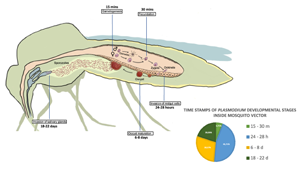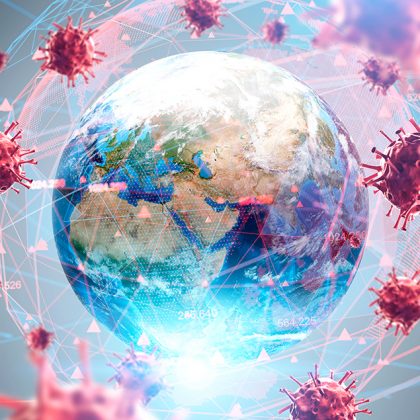Parasitology marks World Malaria Day
On Friday 25th April, we in Parasitology mark World Malaria Day 2025 and take a moment to reflect upon a few key articles and conference activities that contribute to and support the cause.
At first glance, the messaging around awareness days can feel at odds with the devastating realities they highlight—particularly when the topic is a parasitic disease that continues to cause high mortality, especially among young African children. This dissonance is even sharper in light of recent global aid cuts, which are actively undermining key malaria interventions. From restricting access to vital antimalarial drugs in maternal and child health clinics, to the declining effectiveness of mosquito control tools like insecticide-treated nets and indoor spraying, the setbacks are tangible.
Despite these challenges, there remains room for measured optimism and determined advocacy. International organisations such as WHO, Roll Back Malaria, and other partners continue to lead the charge, adapting their strategies and messaging to maintain momentum. Under the banner “Malaria Ends With Us: Reinvest, Reimagine, Reignite”, World Malaria Day 2025 offers a platform not for celebration, but for reflection, recommitment, and global solidarity.
This day plays an important role in informing, educating, and mobilising, serving as a grassroots movement that pushes upward, influencing both national policies and global priorities. With a unified voice and strategic amplification, it also seeks to remind distant political leaders of their responsibilities to support one of the longest-running battles in public health.
As an update to the 2021 Parasitology blog written by our malaria expert and editor, Dr Lisa Ranford-Cartwright, these three recent open access articles discuss the use of antimalarial drugs, natural immunity in non-human primates and the infection biology of mosquitoes, have been added to our World Malaria Day Collection:

1. A roadmap for understanding sulfadoxine-pyrimethamine in malaria chemoprevention
This review examines SP’s mechanisms, broader antimicrobial effects, and role in immunity, even in areas with high resistance. A roadmap of evidence is proposed to guide both SP use and the development of alternative tools like vaccines and monoclonal antibodies.

2. Naturally acquired immunity to Plasmodium pitheci in Bornean orangutans (Pongo pygmaeus)
This study looked at how orangutans in Borneo develop natural immunity to a type of malaria found in their environment. Over five years, researchers tracked infections in 135 orangutans and found that those regularly exposed to the parasite often showed no symptoms, suggesting they built up immunity. However, orangutans who hadn’t had recent infections were much more likely to get sick—pointing to immunity that fades without ongoing exposure.

3. Genomic advances in the study of the mosquito vector during avian malaria infection
This review explores what we’ve learned from Anopheles and highlights the need for more genetic research on Culex mosquitoes. Studying both could uncover shared genes that help stop the spread of malaria and protect both human and wildlife health.
Throughout the year, Parasitology has been promoting and supporting the research of those studying zoonotic malaria. A forthcoming Special Issue, guest edited by Professor Lucas Van Lun entitled “Primate malaria and zoonosis” will open its call this summer and is set to synergise with further Cambridge University Press support of the 2025 “5th International Congress of Parasite of Wildlife – ICPOW” in South Africa this coming September. ICPOW is an important meeting of parasitologists in Africa, and is encouraging the formation of new scientific networks across the continent of Africa and beyond.




